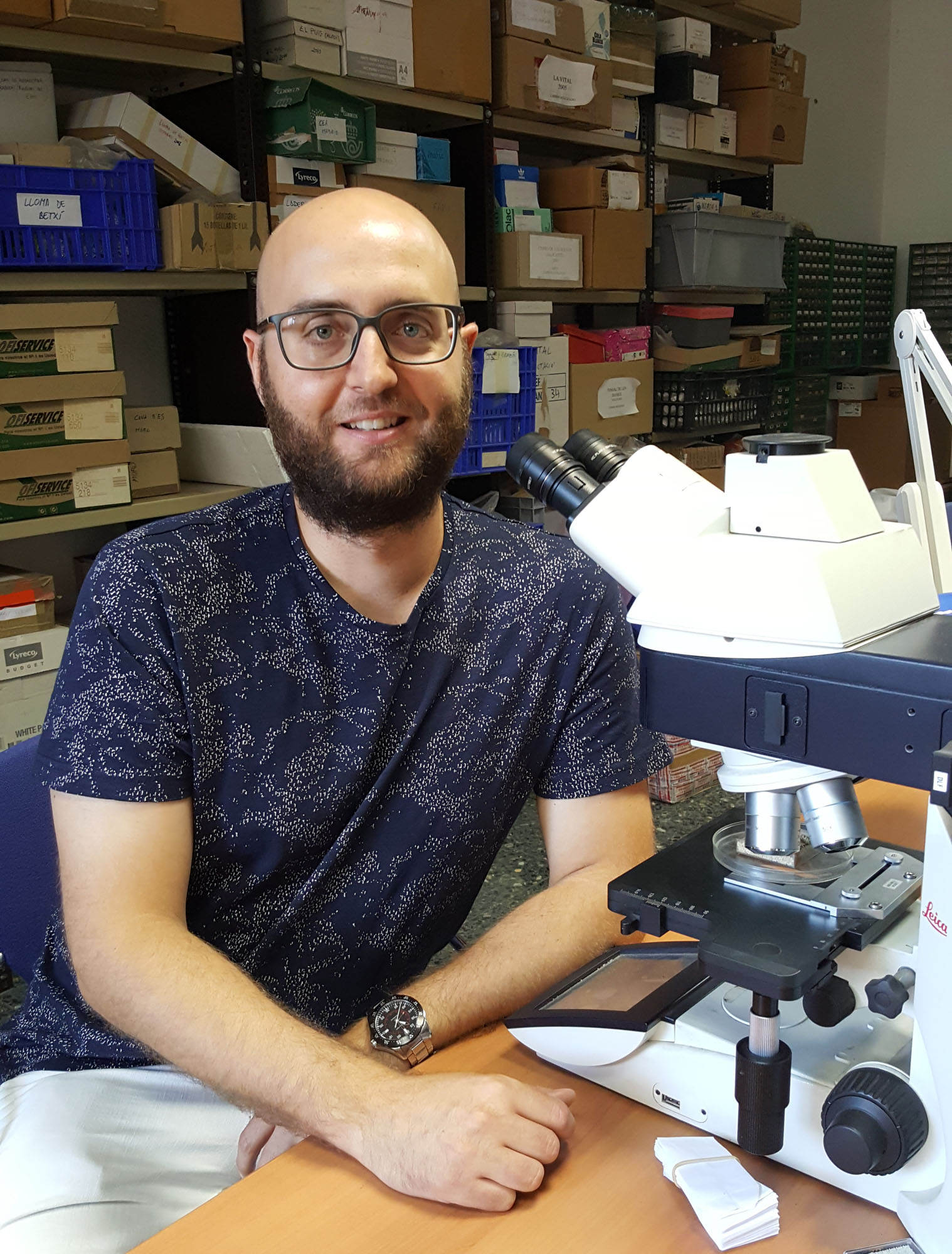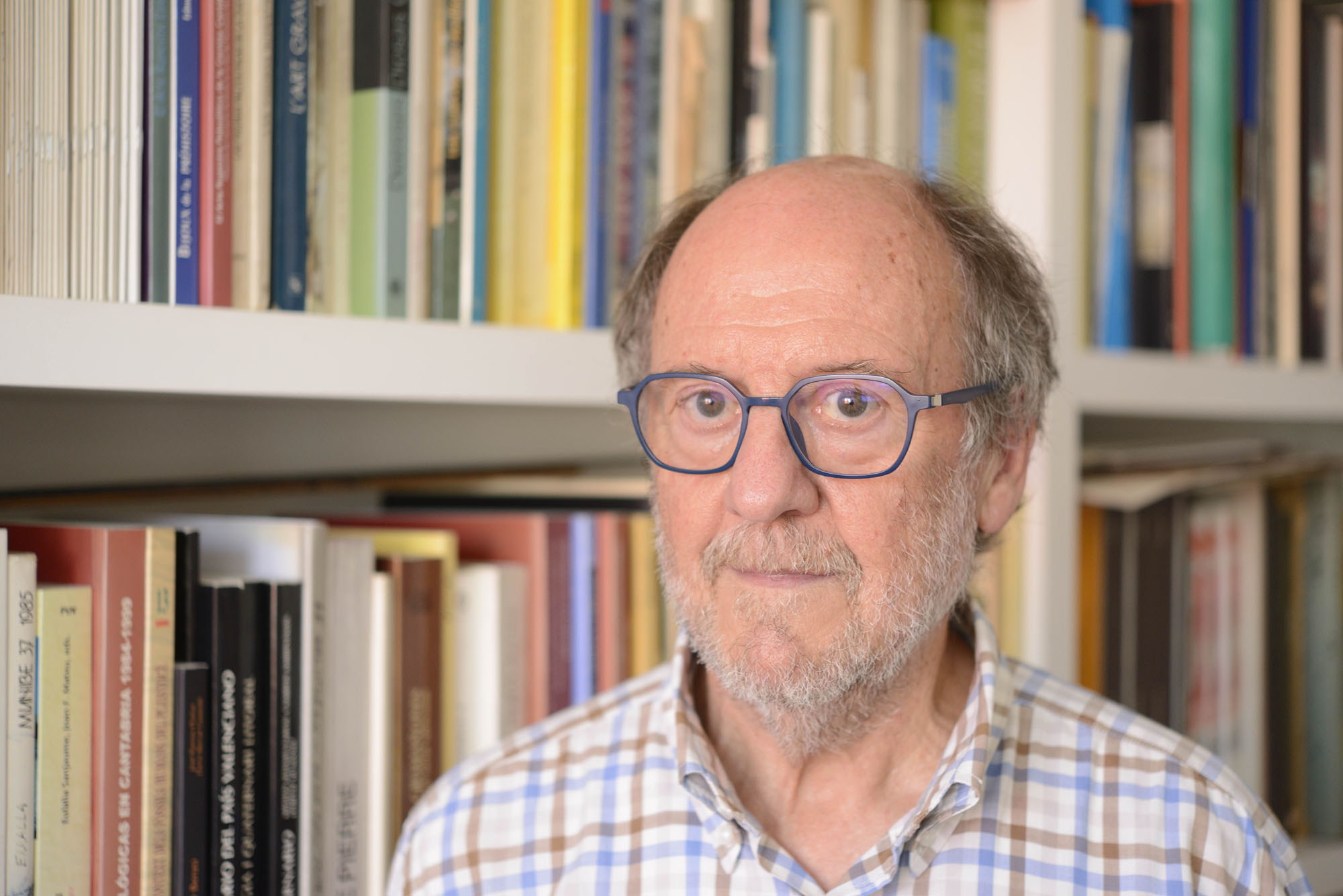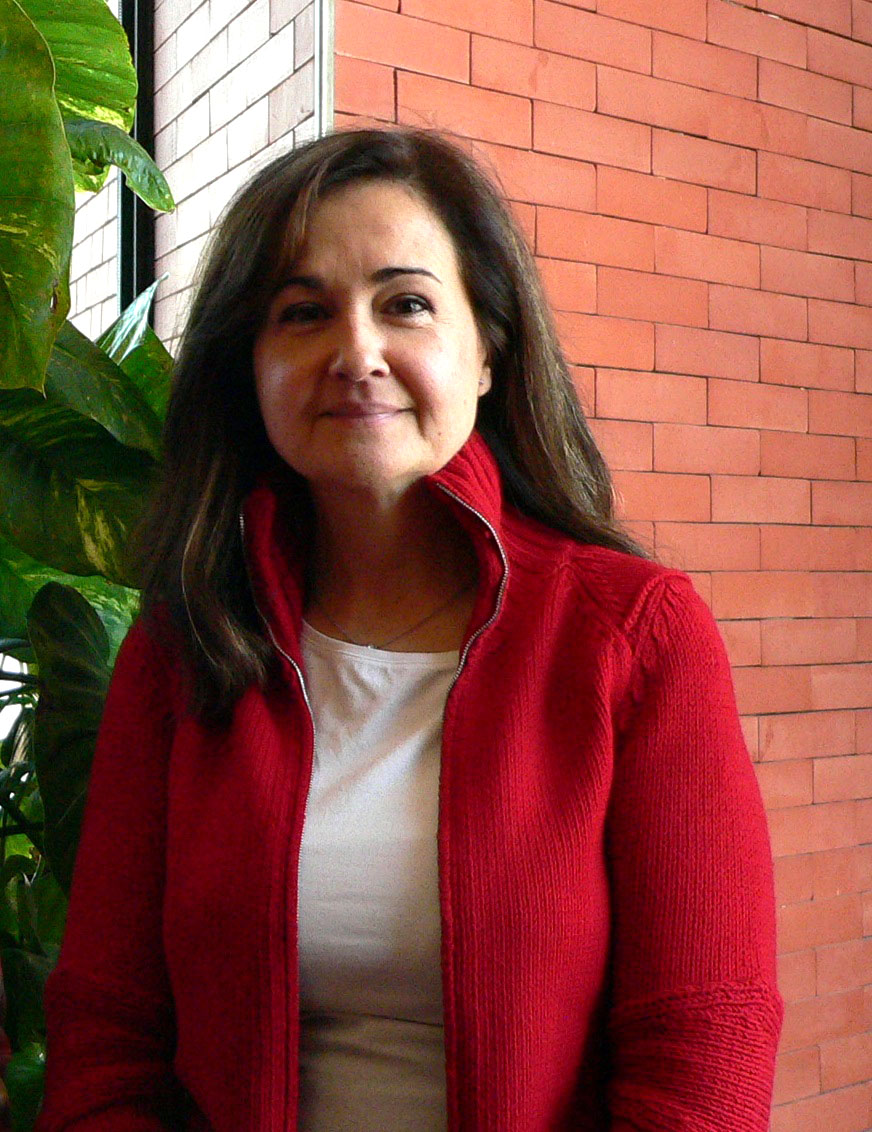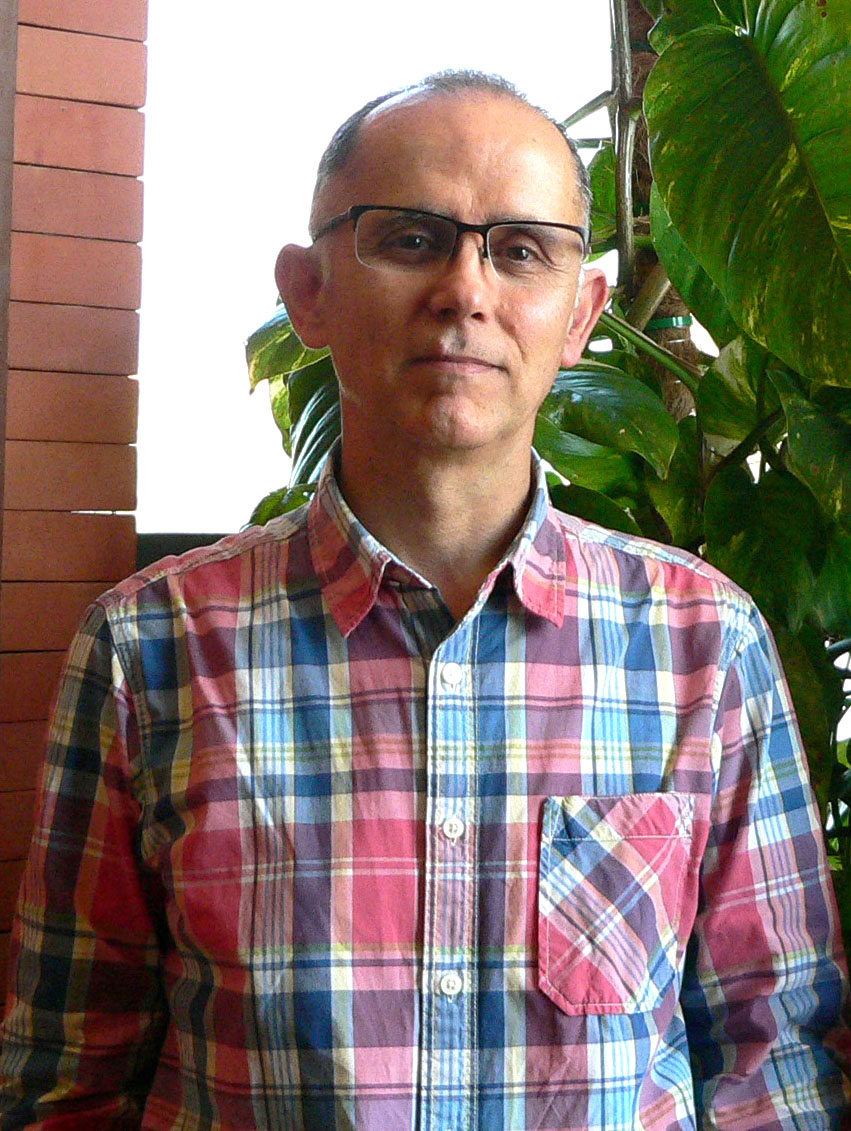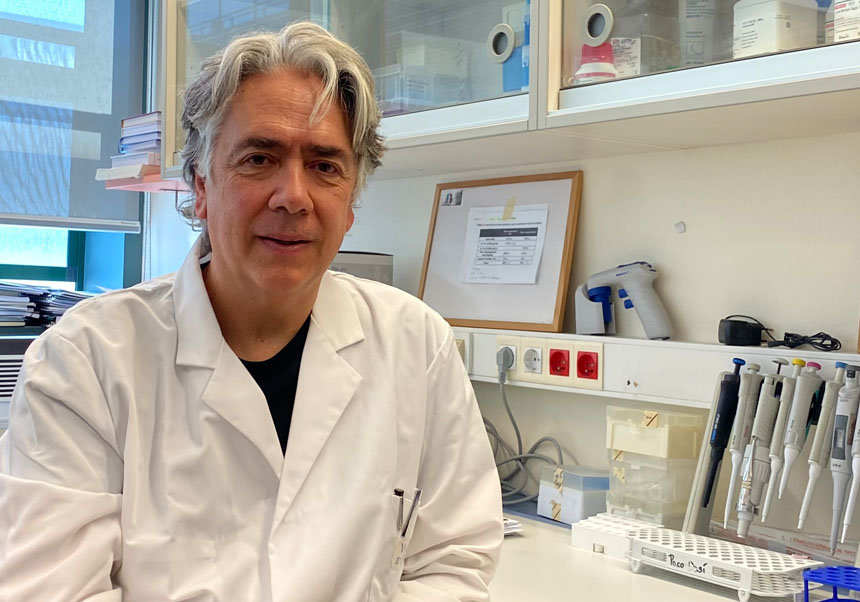A physical-nuclear technique fixes for the first time the origin of Valencian flint and establishes new mobility parameters in the Paleolithic
- Scientific Culture and Innovation Unit
- July 18th, 2022
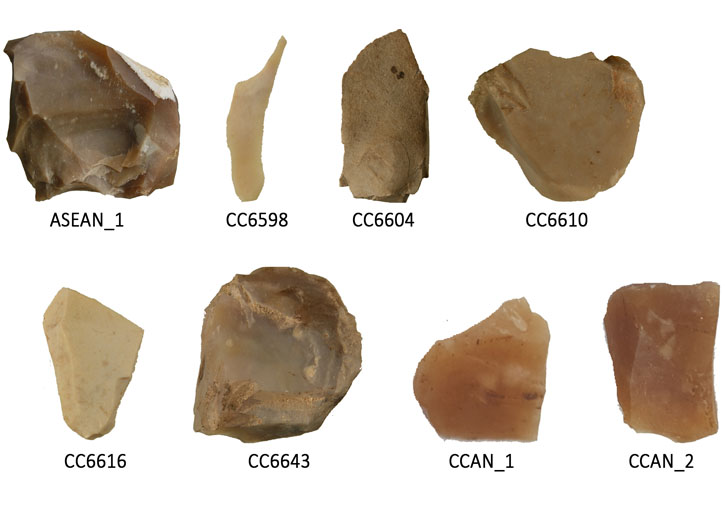
An international team of researchers, led by the professor of the University of Valencia (UV) Aleix Eixea, has applied for the first time a technique from nuclear physics, Neutron Activation Analysis (NAA), to determine the origin of some flint from Middle and Upper Palaeolithic sites in the current provinces of Valencia and Alicante. The study, published in the journal Lithic Technology, makes it possible to determine the origin of these and the mobility patterns of the populations that used them.
The work has been carried out by researchers from the Department of Prehistory, Archaeology and Ancient History (Professor Valentín Villaverde and Eixea himself) and the Institute of Materials Science (ICMUV), in this case Clodoaldo Roldán and Sonia Murcia, the two entities of the UV. The Centre for Nuclear Sciences and Technologies (C2TN) of the University of Lisbon, the Centre for Energy Research, Nuclear Analysis and Radiography Department of Budapest, and the University of Applied Sciences and Arts of southern Switzerland have collaborated in the research.
Neutron activation analysis (NAA) consists of irradiating a sample, in this case flint, with neutrons, a fact before which the activation of gamma-emitting radioactive isotopes between the flint components occurs. The information on these emissions allows us to know the elemental chemical composition of the sample, including major elements and trace elements. The 41 samples analysed come from sites such as Cova Negra (Xàtiva), Cova de les Cendres (Teulada) or Cova de les Malladetes (Barx), among others.
“The results obtained have made it possible to group the different types of flint into three large groups. Each one of them has similar characteristics and have appeared in different sites, both near and far from each other, as assigned to the Middle and/or Upper Palaeolithic. This indicates that the use of these raw materials occurred by the Neanderthal and sapiens populations on a recurring basis over time and space, and constituted a broad territorial fabric structured by natural corridors”, highlights Aleix Eixea, professor at the UV , director of the Sagvntvm magazine and specialist in the mobility of groups from the Mediterranean Palaeolithic.
“This work represents a further step in the characterisation of flint as a raw material of primitive societies through a multidisciplinary study that, through different analytical techniques, integrates archaeologists, physicists, chemists and geologists, and provides a reference framework for future studies”, highlighted Clodoaldo Roldán.
In this work, in addition to the macroscopic observations, a first geochemical and petrographic characterisation of different flint from various Middle and Upper Palaeolithic Valencian deposits is carried out. To do this, together with Neutron Activation, other methods such as Polarised Light Microscopy or Scanning Electron Microscopy coupled to an Energy Dispersive X-ray Spectrometer have been combined. Their importance lies in their combination, since the first of them is one of the first times it has been applied in Europe for this type of material. With the results and from the chemical and mineralogical compositions documented in the flint, statistical analyses have been carried out that have allowed the samples to be grouped by their common characteristics.
In recent years, one of the most debated aspects in prehistoric archaeology has been the determination of the patterns of territorial mobility of Palaeolithic populations. For this, the documentation of the different raw materials, especially flint and the exact location of its outcrops, is essential. The introduction of new analysis techniques to address these aspects constitutes one of the main methodological advances in the prehistoric discipline.
Article: Eixea, A., Roldán, C., Villaverde, V., Dias, M. I., Prudêncio, M. I., Marques, R., Russo, D., Gméling, K., Cavallo, G., Murcia, S. (2022). «Geochemical and petrographic analyses on Middle and Upper Palaeolithic cherts from the central region of Mediterranean Iberia». Lithic Technology. DOI: https://doi.org/10.1080/01977261.2022.2097811
Photo captions:
- (From left to right). Aleix Eixea, Valentín Villaverde, Sonia Murcia and Clodoaldo Roldán.



